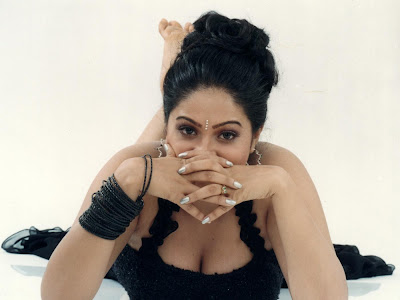[The fourth in our series of guest reviews on Grant Morrison's The Invisibles by Zach King, who blogs about movies as The Cinema King]
In the interest of full disclosure, I'll state that I believe Bloody Hell in America, the fourth volume of The Invisibles, is among the best work Grant Morrison has done in comics, right up there with Final Crisis, his run on Batman, and All-Star Superman (which I believe is his all-time pièce de résistance). Unfortunately that doesn't bode well for the rest of the series when it peaks at the midway point, but that's a matter for subsequent reviews.
"And so we return and begin again." It's been a year since the Invisibles rescued King Mob and Lord Fanny from the torture chamber of Sir Miles Delacourt, and the team has been recharging in America on the estate of Invisibles financierBruce Wayne Mason Lang. After a ritual shaking up of the team hierarchy -- Ragged Robin is now the leader -- our heroes are off to Dulce, New Mexico, to retrieve a secret AIDS vaccine from a covert government base. They're unaware that they're walking into a trap laid by Mister Quimper and that their newest ally Jolly Roger may already be compromised ...
Bloody Hell in America wisely does not pick up where Entropy in the U.K. left off, applying rather than merely continuing the energy and momentum from the last few issues. Rather than show us the rest of the escape from the torture chambers (we can infer, since King Mob's last action in Entropy in the U.K. was reloading his gun, that there must have been a firefight to leave the building), Morrison jumps forward a year and focuses on glamorizing the Invisibles, unapologetically turning them into full-blown rock stars. Now that we know who all these people are (well, save Ragged Robin, whose mysterious background is practically valid characterization at this point) and have reasons to care for them, Morrison wants our interest in the characters to be felt as much as understood. "Nice and smooth" becomes the mood of the series, heretofore nice but somewhat less than smooth. It's the kind of move that would be indulgent if it weren't so successful.
It's slightly ironic, then, that artist Phil Jimenez -- who (I've said it once, I'll say it again) is undoubtedly the definitive artist for The Invisibles - doesn't slather on the Day-Glo and go for excessive visual glamor. The body language becomes increasingly dramatic -- Lord Fanny and Jack, particularly, strike poses very reminiscent of rock stars -- but Jimenez's detailed line work brings out all the grittiness and at times violent ugliness of the world these characters inhabit. When Quimper removes his mask, for example, it's a prime opportunity for a vividly impressionistic image, but Jimenez grounds his Quimper unmasked in heavy shadows which don't entirely obscure meticulously charred flesh and distinct dental disfigurements. (Caveat: Jimenez is the best artist on The Invisibles, but that may be only because Brian Bolland never did interiors. His cover work, which begins in this volume, is incredible, better even than Sean Phillips's work in the last one.)
The revelation of Quimper raises an interesting point about The Invisibles -- now that the series is at its halfway point (looking, of course, retrospectively), there are no signs of stopping. This isn't a bad thing in itself, but it becomes slightly problematic when the series continues to expand as it does. The introduction of Jolly Roger and Mason Lang are difficult because Jolly Roger feels extraneous now that we've gotten full senses of characterization for the Invisibles proper and because Mason Lang isn't really given anything to do except be a kind of Bruce Wayne stand-in (which makes it obvious that Morrison has never really stopped writing Batman since Arkham Asylum in 1989). Additionally, as compelling as Quimper is, it's unfortunate that (for now) he has replaced Sir Miles, just when the latter was starting to get interesting. Fortunately, these are mistakes the remainder of the series corrects, and taken in isolation the volume never truly suffers from these flaws.
Bloody Hell in America is such a fun read in part because it's the most pop-savvy, most accessible, most exhilarating volume of The Invisibles, but it's helped by the fact that Morrison clearly knows he's writing a four-issue action film. King Mob complains to Mason, "You've just turned the last ten minutes of our lives into a Tarantino scene. I'd call that a triumph for post-modernism any day of the week." Bloody Hell in America is indeed a triumph, the most digestible of the seven volumes and, at $12.99, a good trial-sized dose of Morrison's magnum opus. Although after that last frame cliffhanger, I can't imagine anyone not coming back for another helping.
[Contains full covers and a recap/character page. The collection is, however, missing one less-than-crucial page (the last of issue #4), which introduces Takashi, a scientist who becomes pivotal in the next volumes. Printed on non-glossy paper.]
That's volume four under wraps, loyal readers. Stay tuned for the fifth of seven reviews, Counting to None, in which the end begins and we meet the Hand of Fate -- but fortunately there's still time to dance like there's no millennium approaching.
Read Zach's full Invisibles review series. Next week, not one but two Time Masters reviews, starting Monday -- you'll remember to stop by, won't you?
More about →
In the interest of full disclosure, I'll state that I believe Bloody Hell in America, the fourth volume of The Invisibles, is among the best work Grant Morrison has done in comics, right up there with Final Crisis, his run on Batman, and All-Star Superman (which I believe is his all-time pièce de résistance). Unfortunately that doesn't bode well for the rest of the series when it peaks at the midway point, but that's a matter for subsequent reviews.
"And so we return and begin again." It's been a year since the Invisibles rescued King Mob and Lord Fanny from the torture chamber of Sir Miles Delacourt, and the team has been recharging in America on the estate of Invisibles financier
Bloody Hell in America wisely does not pick up where Entropy in the U.K. left off, applying rather than merely continuing the energy and momentum from the last few issues. Rather than show us the rest of the escape from the torture chambers (we can infer, since King Mob's last action in Entropy in the U.K. was reloading his gun, that there must have been a firefight to leave the building), Morrison jumps forward a year and focuses on glamorizing the Invisibles, unapologetically turning them into full-blown rock stars. Now that we know who all these people are (well, save Ragged Robin, whose mysterious background is practically valid characterization at this point) and have reasons to care for them, Morrison wants our interest in the characters to be felt as much as understood. "Nice and smooth" becomes the mood of the series, heretofore nice but somewhat less than smooth. It's the kind of move that would be indulgent if it weren't so successful.
It's slightly ironic, then, that artist Phil Jimenez -- who (I've said it once, I'll say it again) is undoubtedly the definitive artist for The Invisibles - doesn't slather on the Day-Glo and go for excessive visual glamor. The body language becomes increasingly dramatic -- Lord Fanny and Jack, particularly, strike poses very reminiscent of rock stars -- but Jimenez's detailed line work brings out all the grittiness and at times violent ugliness of the world these characters inhabit. When Quimper removes his mask, for example, it's a prime opportunity for a vividly impressionistic image, but Jimenez grounds his Quimper unmasked in heavy shadows which don't entirely obscure meticulously charred flesh and distinct dental disfigurements. (Caveat: Jimenez is the best artist on The Invisibles, but that may be only because Brian Bolland never did interiors. His cover work, which begins in this volume, is incredible, better even than Sean Phillips's work in the last one.)
The revelation of Quimper raises an interesting point about The Invisibles -- now that the series is at its halfway point (looking, of course, retrospectively), there are no signs of stopping. This isn't a bad thing in itself, but it becomes slightly problematic when the series continues to expand as it does. The introduction of Jolly Roger and Mason Lang are difficult because Jolly Roger feels extraneous now that we've gotten full senses of characterization for the Invisibles proper and because Mason Lang isn't really given anything to do except be a kind of Bruce Wayne stand-in (which makes it obvious that Morrison has never really stopped writing Batman since Arkham Asylum in 1989). Additionally, as compelling as Quimper is, it's unfortunate that (for now) he has replaced Sir Miles, just when the latter was starting to get interesting. Fortunately, these are mistakes the remainder of the series corrects, and taken in isolation the volume never truly suffers from these flaws.
Bloody Hell in America is such a fun read in part because it's the most pop-savvy, most accessible, most exhilarating volume of The Invisibles, but it's helped by the fact that Morrison clearly knows he's writing a four-issue action film. King Mob complains to Mason, "You've just turned the last ten minutes of our lives into a Tarantino scene. I'd call that a triumph for post-modernism any day of the week." Bloody Hell in America is indeed a triumph, the most digestible of the seven volumes and, at $12.99, a good trial-sized dose of Morrison's magnum opus. Although after that last frame cliffhanger, I can't imagine anyone not coming back for another helping.
[Contains full covers and a recap/character page. The collection is, however, missing one less-than-crucial page (the last of issue #4), which introduces Takashi, a scientist who becomes pivotal in the next volumes. Printed on non-glossy paper.]
That's volume four under wraps, loyal readers. Stay tuned for the fifth of seven reviews, Counting to None, in which the end begins and we meet the Hand of Fate -- but fortunately there's still time to dance like there's no millennium approaching.
Read Zach's full Invisibles review series. Next week, not one but two Time Masters reviews, starting Monday -- you'll remember to stop by, won't you?


















































